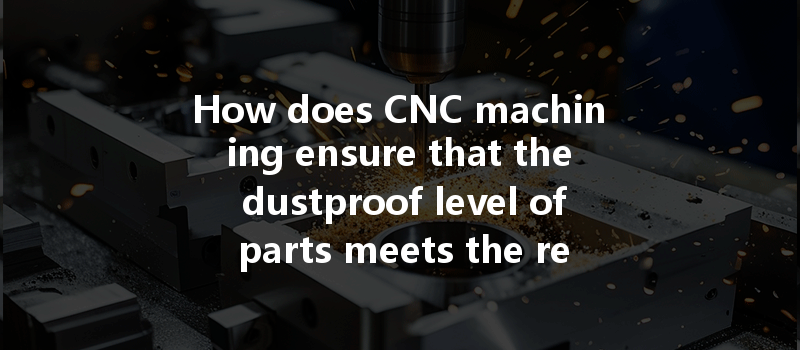Did you know that companies lose more than $1 trillion annually due to unplanned downtime? This staggering statistic sheds light on the importance of precision engineering and the critical role that components play in machinery performance. Among these components, parts created using Computer Numerical Control (CNC) machining hold significant importance, particularly concerning their dustproof level. The ability of these parts to resist the intrusion of dust and contaminants is crucial for maintaining operational efficiency, reducing wear, and enhancing the longevity of machinery.
In this comprehensive blog post, we’ll explore how CNC machining can ensure that the dustproof level of parts meets specific requirements. We will dive deep into the various techniques, standards, and measures that can be adopted to enhance dustproof performance in CNC machined components.
Understanding the Importance of Dustproof Machining
Before diving into the methods, it’s essential to understand why dustproofing is critical in CNC machining. Dust and other particulate matter can lead to several unresolved issues in machinery, including:
Factors Influencing Dustproof Levels in CNC Machining
Several factors influence the dustproof capabilities of CNC machined parts. Understanding these factors is the first step toward achieving optimal performance:
Techniques to Achieve Desired Dustproof Levels
Below are detailed solutions to help ensure that CNC machined parts can meet required dustproof standards:
Choosing the right material is the first and most significant step to achieving optimal dustproofing. Here are considerations for selecting materials:
Incorporating specific design features can significantly enhance the dustproof levels of components:

The precision and techniques employed in CNC machining play a vital role in ensuring parts meet dustproof coating requirements:
Implementing quality control measures is crucial to ensure that the components meet the necessary dustproof performance:
Innovative Technologies in CNC Machining for Dustproofing
Technological advancements have provided new methods and tools for enhancing dustproof performance in CNC machined products:
Automation in CNC machining leads to improved precision, which is essential for producing dustproof parts. Automated processes are less prone to human error, ensuring consistency and quality.
3D scanning and measurement technologies have advanced to provide manufacturers with accurate data on the dimensions and shape of parts. Utilizing these technologies ensures that the machined components fit together with minimal gaps, further enhancing dustproofing.
Emerging technologies in surface treatment—such as modern vapor deposition methods—create exceptionally smooth surfaces and barriers against the penetration of dust.
Real-World Applications for Dustproof CNC Machined Parts
Understanding the practical applications of dustproof CNC machined parts can provide context for the significance of advanced techniques and processes discussed in the article:
In summary, achieving optimal dustproof levels in CNC machined parts is not merely a preference—it’s a necessity for high-performance operations. From careful material selection to advanced machining techniques and rigorous quality control measures, each factor plays a pivotal role in ensuring operational excellence and machinery longevity.
As we’ve discovered, dustproofing is a multifaceted challenge that requires a thorough understanding of engineering principles, as well as the implementation of innovative solutions. The techniques outlined in this blog offer actionable insights for manufacturers and engineers to bolster the reliability and effectiveness of their components.
In an era where precision engineering makes all the difference, considering how to dustproof CNC machined parts can lead to lasting operational success. Keeping this essential aspect in mind will not only help maintain high-performance standards but ultimately contribute to significant cost savings and increased productivity.
Reflect on the importance of these insights, as they could be the key to enhancing your manufacturing processes and improving the reliability of your products in the market. The pursuit of dustproof machining should not be overlooked—it’s an essential investment in quality and performance.






